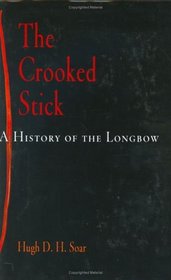Search -
The Crooked Stick: A History of the Longbow (Weapons in History)
The Crooked Stick A History of the Longbow - Weapons in History
Author:
On a clear July morning in 1346, a small force approached the walls of Caen for battle. The attackers rode to the field on horseback, banners and pennants fluttering in the light breeze. Behind them marched bowmen in tightly ranked units. At the sound of a crisp battle horn, they halted. A twinge of apprehension rippled through the thousands of ... more »
Author:
On a clear July morning in 1346, a small force approached the walls of Caen for battle. The attackers rode to the field on horseback, banners and pennants fluttering in the light breeze. Behind them marched bowmen in tightly ranked units. At the sound of a crisp battle horn, they halted. A twinge of apprehension rippled through the thousands of ... more »
ISBN-13: 9781594160028
ISBN-10: 1594160023
Publication Date: 11/1/2004
Pages: 243
Rating: ?
ISBN-10: 1594160023
Publication Date: 11/1/2004
Pages: 243
Rating: ?
0 stars, based on 0 rating
Publisher: Westholme Publishing
Book Type: Hardcover
Members Wishing: 1
Reviews: Amazon | Write a Review
Book Type: Hardcover
Members Wishing: 1
Reviews: Amazon | Write a Review
Genres:
- History >> Europe >> General
- History >> Military >> General
- History >> Military >> Weapons & Warfare >> Conventional >> General
- Sports & Outdoors >> Individual Sports >> Archery
- Sports & Outdoors >> Miscellaneous >> History of Sports




